Identify Your Customer
Learning Objectives
After completing this unit, you’ll be able to:
- Describe how to determine your target market.
- List key attributes of the customers within your target market.
- Identify how your app addresses customer needs.
- Determine whether to further segment customers to meet your business goals.
Build Your Business Foundation
Have you heard tales of entrepreneurs who had fantastic ideas but failed to get them to market? We don’t want that to happen to you. We want you to be successful from both a technical and a business perspective.
In our experience, successful AppExchange partners have a business foundation that complements their technical plans. So while your technical folks are hard at work on the technology trail, let’s work together to lay the foundation to market and sell your offering.
We start by identifying the customer segment for which you’re likely to have the most success in selling your offering.
Focus Your Sales Efforts for Success
“My app is amazing! Everyone will want to buy it!” It’s great to have enthusiasm for what you’re building. However, launching a product to a large, general audience is often unsuccessful and difficult when you’re getting a company off the ground.
To get your business going, focus on identifying a base of customers who are most likely to buy your app—that’s your target audience. Learn about their characteristics and business challenges. If you take this approach, we predict that you’ll have a:
- Higher lead-to-close ratio
- Shorter sales cycle
- Greater number of wins with accompanying success stories
- Passionate, engaged base of customer advocates
Why does this approach work? It provides direction to your entire team, particularly your sales team. It also helps you make the best use of the people and resources available to your business.
The approach we are advocating is common. Here’s Steve Blank’s customer development model from his book Four Steps to Epiphany, which advocates a similar process.
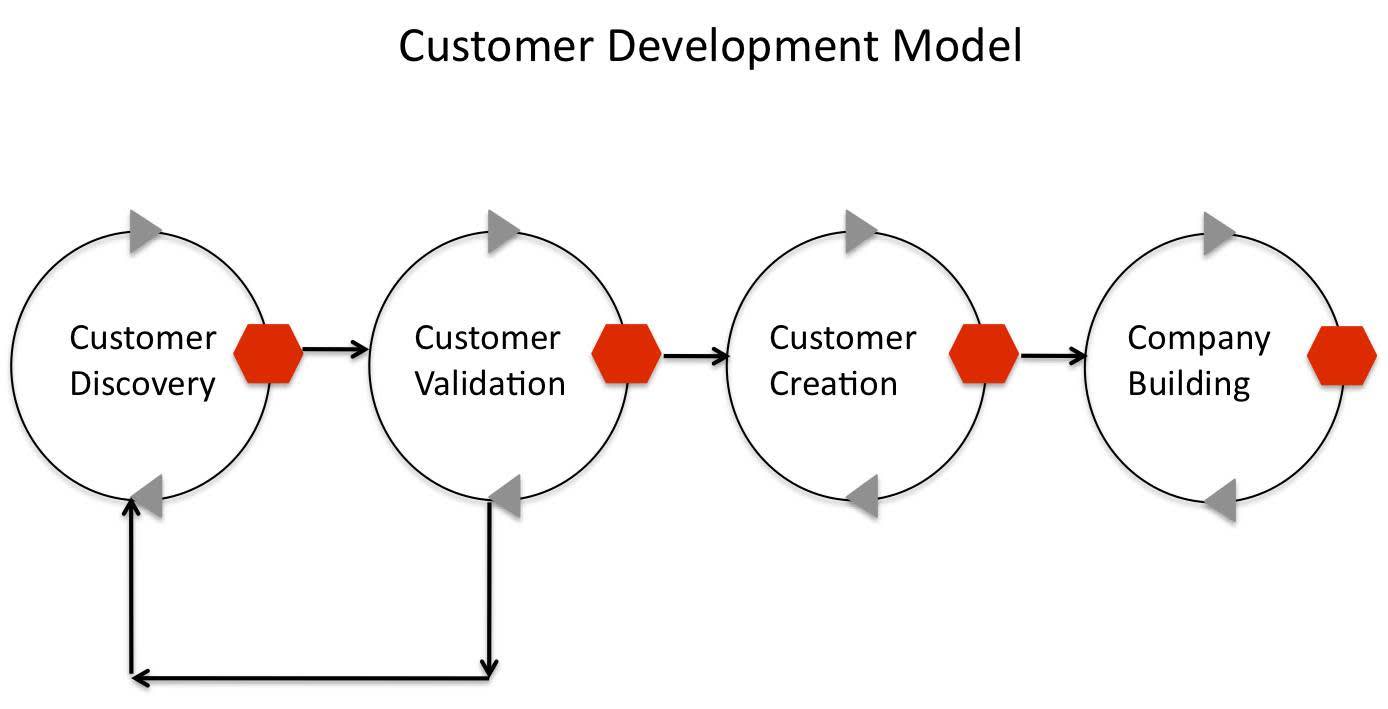
Identify Your Total Addressable Market
Identifying your target audience starts with determining your total addressable market, or TAM.
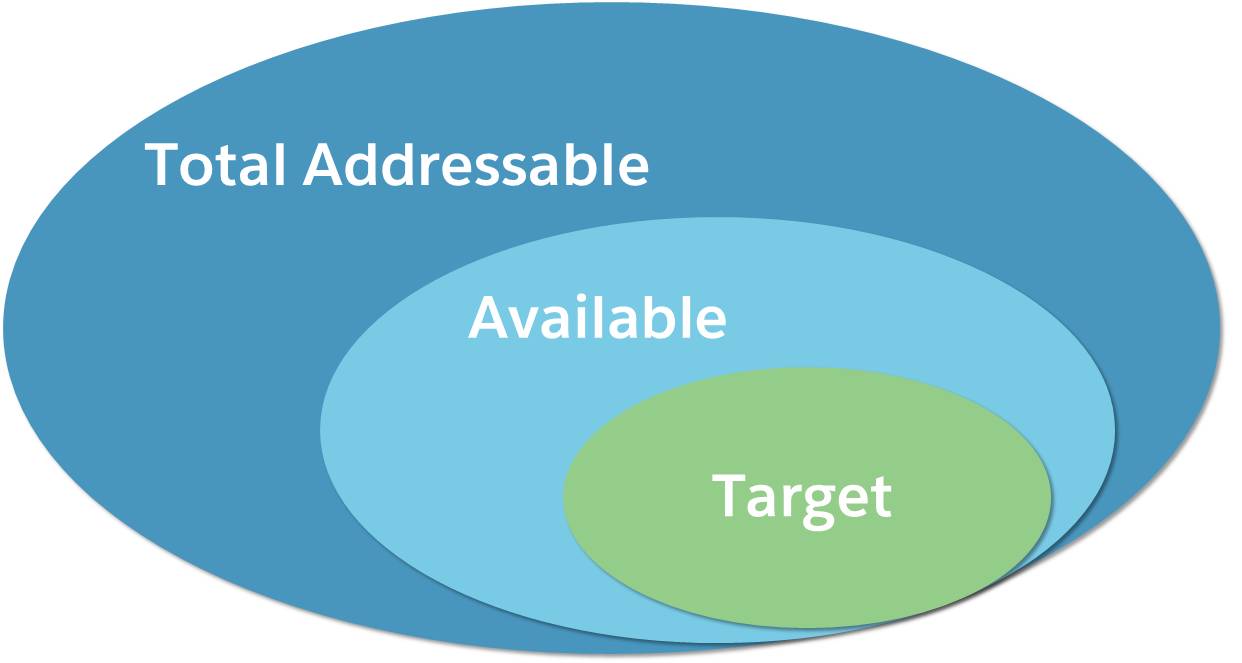
If, theoretically, you sell to every potential customer, the amount of money you make is your TAM.
What qualifies a business as a potential customer? Let’s say you’re building an OEM app for event management. Let’s assume that there are over 20,000 event management companies with, on average, 100 employees each. You’re considering charging $17 per user per month. In this case, your TAM is $34,000,000.
As you determine your TAM, start to analyze potential customers. Here’s an example with fictitious data for the event management app. And yes, you’re estimating gross numbers here.
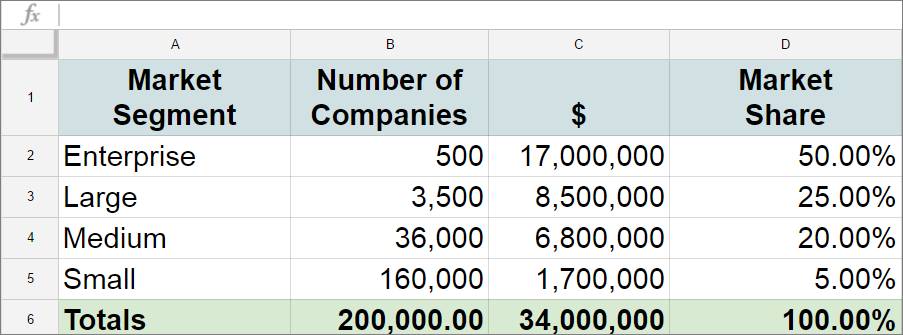
You might discover that your TAM is too small due to the addressable market size. Better to find that out now rather than after you’ve built your product.
Identify the Available Market
How much of the TAM can you capture given other competitors in your space? That’s your available market.
Let’s go back to our event management app. Determine which event management apps exist and how many companies they serve. Also think creatively. You’re not only competing against existing competitors but also against any other tools that prevent a customer from buying your app. For example, determine if your potential customers have home-grown event management apps or if they manage events through spreadsheets.
Take Note of What You Find
As you research your available market, capture information about your competitors to use in the final stage of identifying your target market. Some attributes apply to all competitive analysis, such as share of market, product price, and market segment.
If competing offerings are built on Salesforce, determine which editions they support and whether they are native to Salesforce, hosted on another platform, or hybrids. Determine which customer segments they target and how your offering is different.
Also identify attributes that are specific to your offering. For example, let’s say your vision includes a highly customized mobile solution. You want to know what your competitors offer in that area.
A spreadsheet is a simple, yet effective way to track this information.

Identify Your Target Market
Now it’s time to hone your market further and differentiate your offering from your competitors’ offerings.
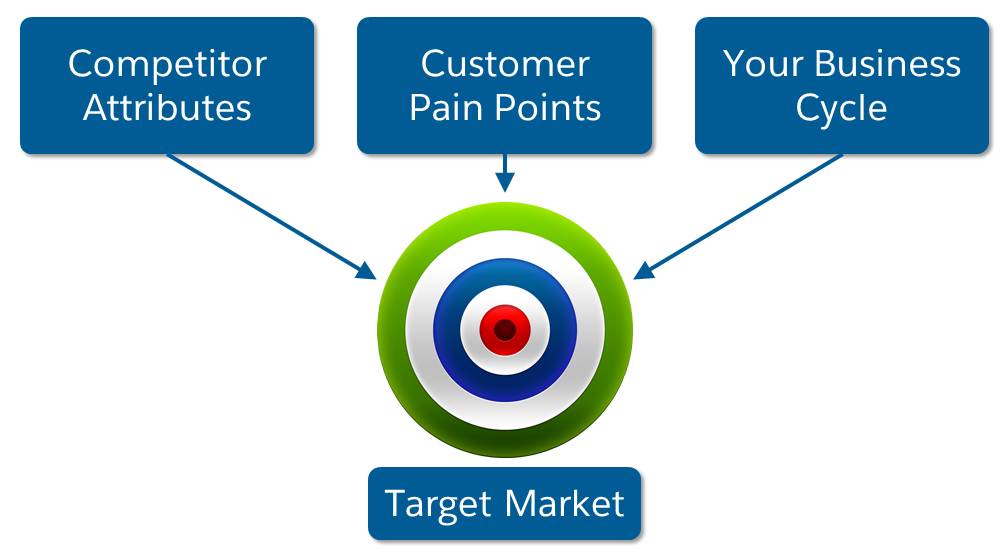
Competitor Attributes
You use the data gathered in determining your available market to focus your product and your sales. What can you offer that isn’t covered by a competitor? If you look at the spreadsheet we created earlier, you see that about 65% of the market is available. Let’s examine the data in terms of the TAM we identified earlier.
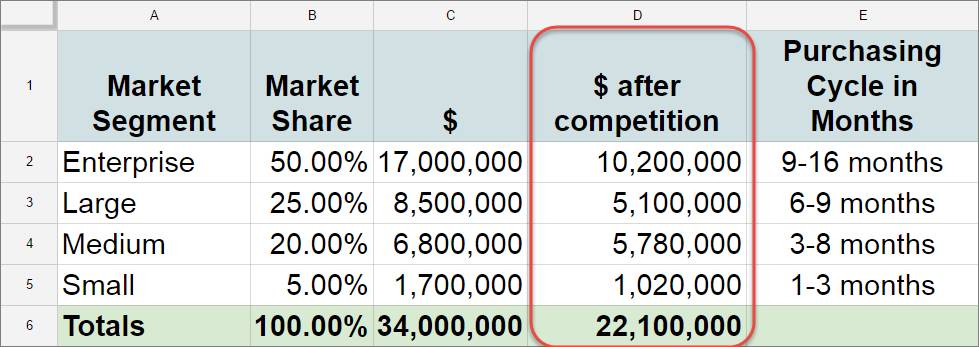
The amount of money in the medium, large, and enterprise customer spaces indicate that these areas are good markets on which to focus.
Customer Pain Points
“If only this app would let me…!”
“This app might be great for small businesses, but for us it doesn’t…”
“It does a great job of covering about two-thirds of our workflow. I keep waiting for the app that does it all.”
“I wouldn’t buy an app unless it did... That’s what’s most important to my business.”
These statements are gold nuggets for you as you identify your target market. Gather them by talking with potential customers. Learn about the processes they use, what is most challenging about those processes, and what they consider critical. Also, listen for comments that provide insight into your competitors.
Consider asking some customers that you speak with to be beta customers. Give them early access to your app, and use them as advisors as you build your product.
Business Cycles
But wait, there’s more. Your budget and the constraints of your business also determine your target market. For example, if you’re on a shoestring budget, your app must sell quickly, so you want customers with a short purchasing cycle.
Consider these questions as you define your market.
- Which segment has the shortest purchasing cycle?
- For which segment is it going to be the easiest to close sales?
- Which segment needs your app the most?
- Is there a segment that allows you to use your personal network?
So, in the event management app example, we are considering medium, large, and enterprise businesses. Let’s say this diagram reflects our sales cycle.
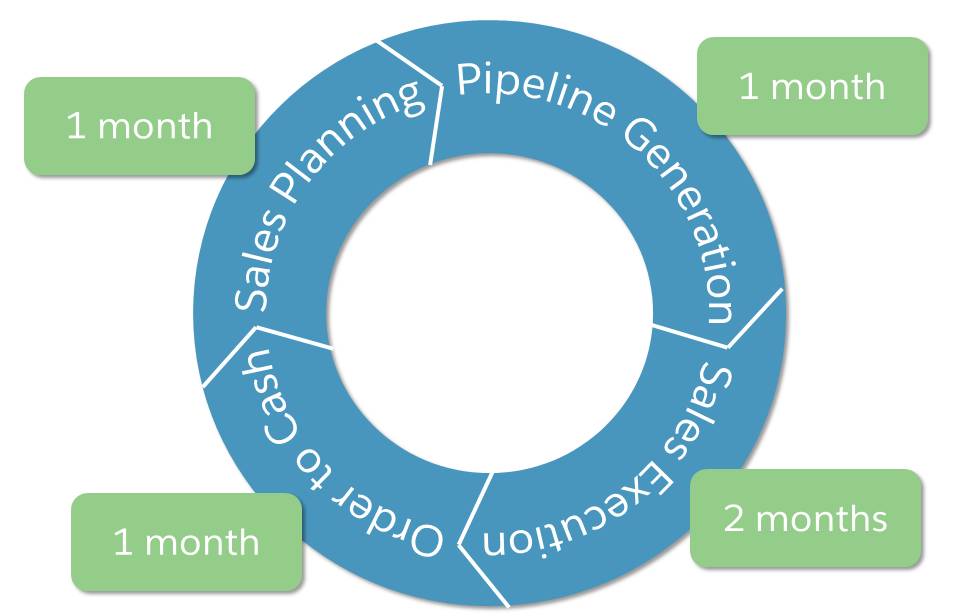
It makes sense to focus our initial offering on medium-sized businesses. Their purchasing cycle is 3 to 8 months, and hence more likely to align with our sales cycle and forecasting.
However, also consider revisiting your proposed sales cycle. The key is to develop a viable sales cycle that works with your customer segment to accurately forecast sales revenue.
As with all the choices you are making, weigh the benefits and risks based on your budget and timing.
Further Segment Your Customers
If you’ve gotten this far, you’ve done great work! Now look at the size of the target market you’ve identified. Is it too large for you to sell into all at once? A large target market provides good opportunity for growth in the future, but makes it difficult for your sales team to focus their efforts. Investors love a large target market, but it’s important to balance that with an effective sales strategy.
If your target market is too large, consider segmenting it with these categories so that your business gains traction faster.
- Geographic regions or specific locations
- Industries and subindustries
- Size of target user base within companies
- The technology your target market is using
Of course, it’s also possible that your customer segment is too small. If that’s the case, figure out how you can broaden it with the least impact to your sales team’s effectiveness.
Who’s Your Customer?
You’ve done the hard part—you’ve identified a particular market segment to focus on. Now you want a rich portrait of the typical customer, which helps all your teams make decisions critical to business success. Use everything you’ve learned so far and contact potential customers to learn more about them.
Then consider creating a customer persona, or personas. You can share the personas with your entire company so that everyone has a touchpoint when making decisions.
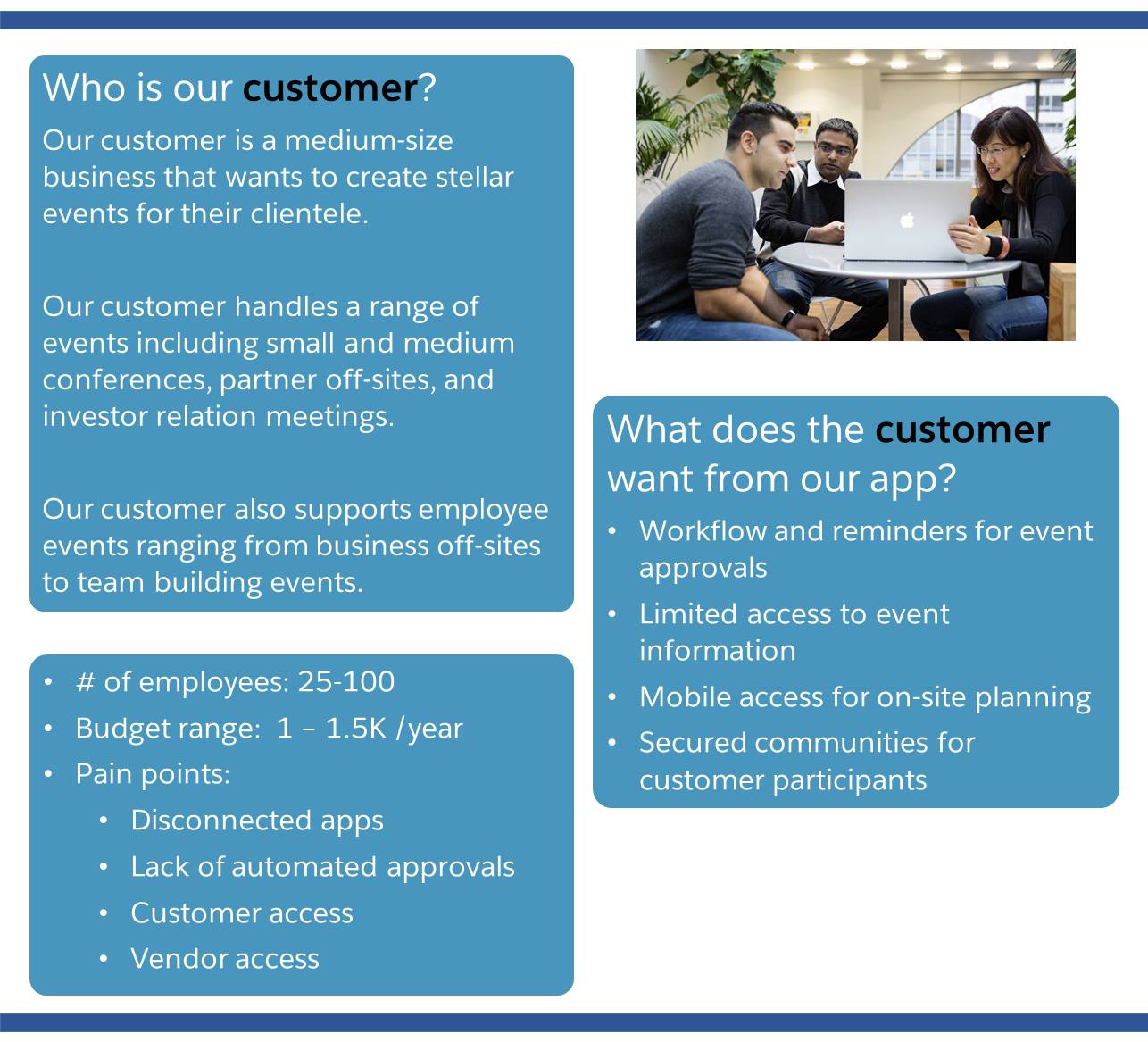
Nice job!
Summary
To begin to build your business foundation:
- Identify your total addressable market.
- Perform a competitive analysis to identify your available market within your total addressable market.
- Using your competitive analysis, your customers’ pain points, and your business cycle, find your target audience.
- Further refine or broaden your customer segment to meet your business needs.
Then you create a customer profile to guide your entire team.
Remember, the goal is to focus your energy and resources to give you a foundation in the market. You use the work we’ve done here when you create a business plan and a go-to-market strategy.